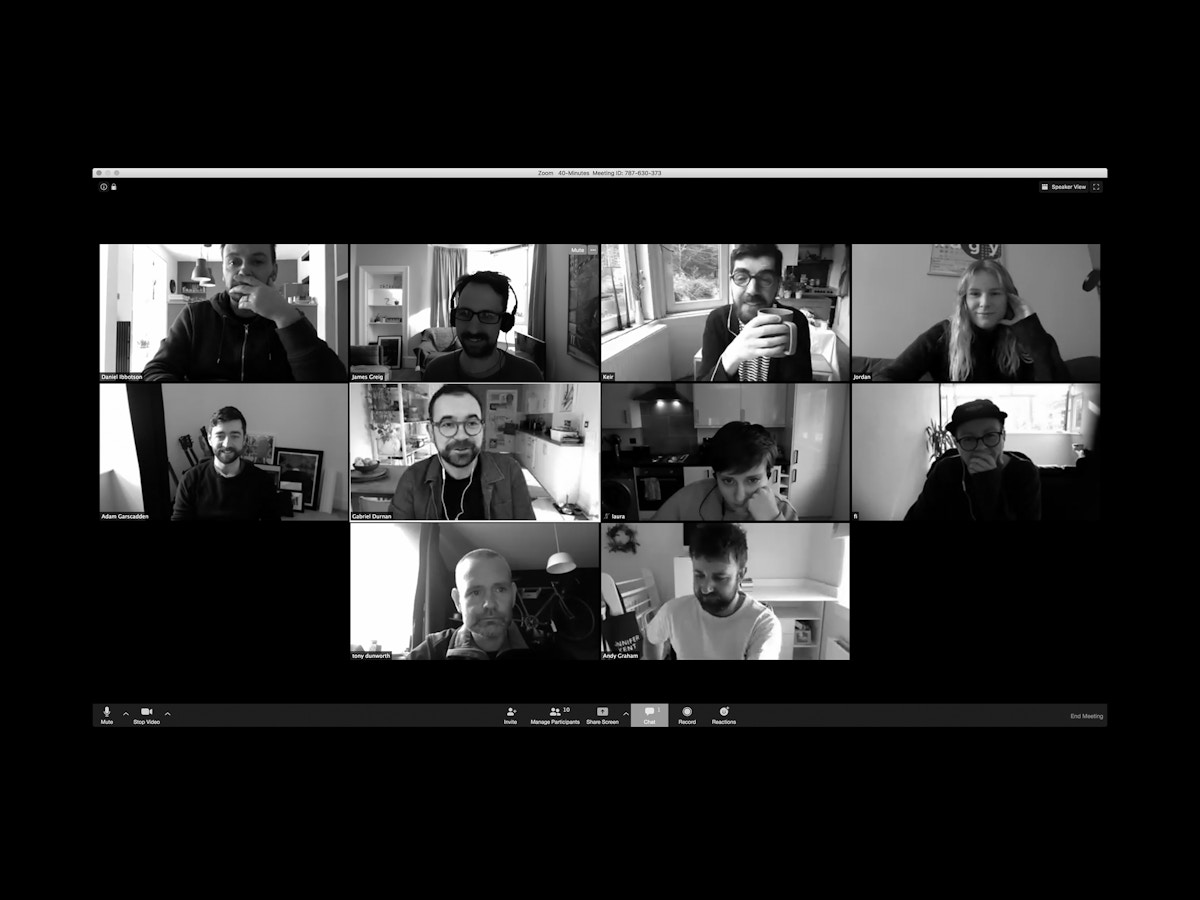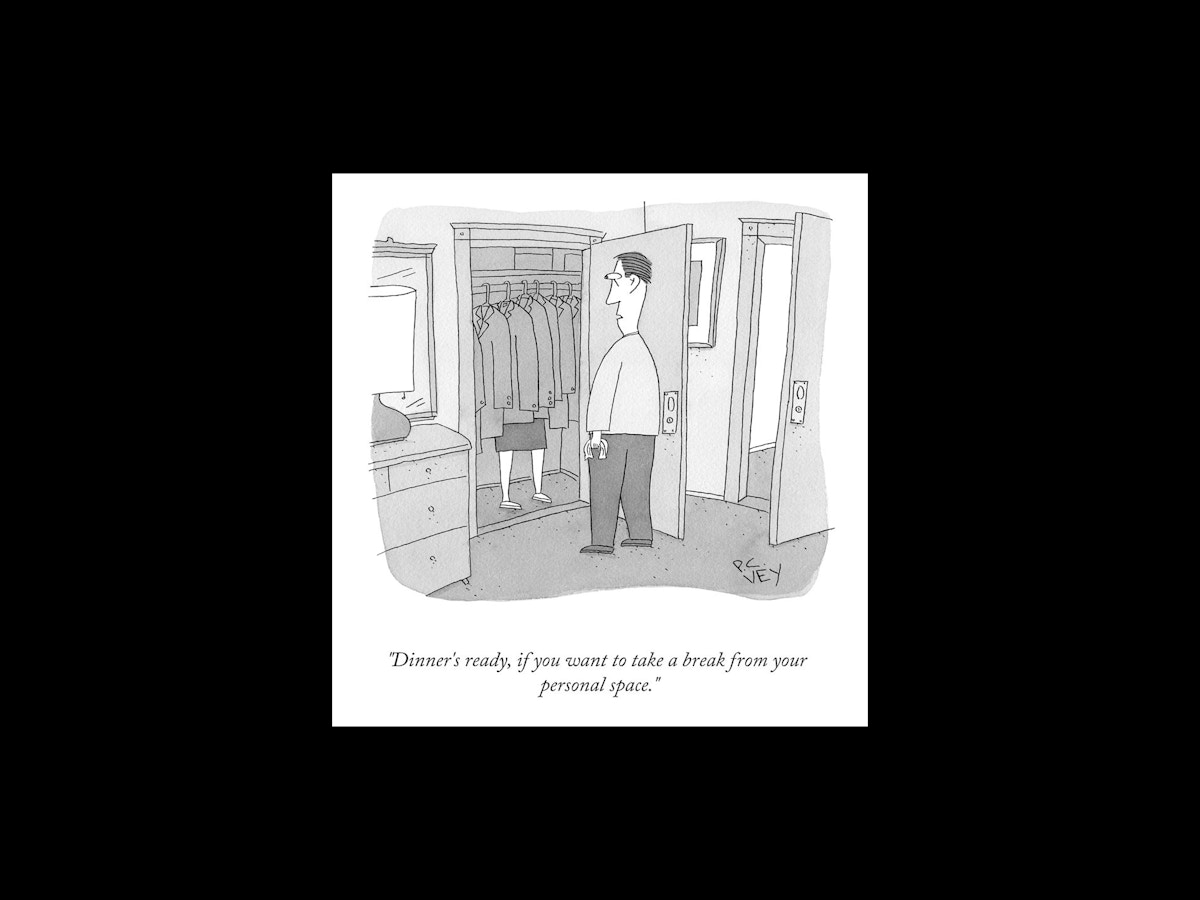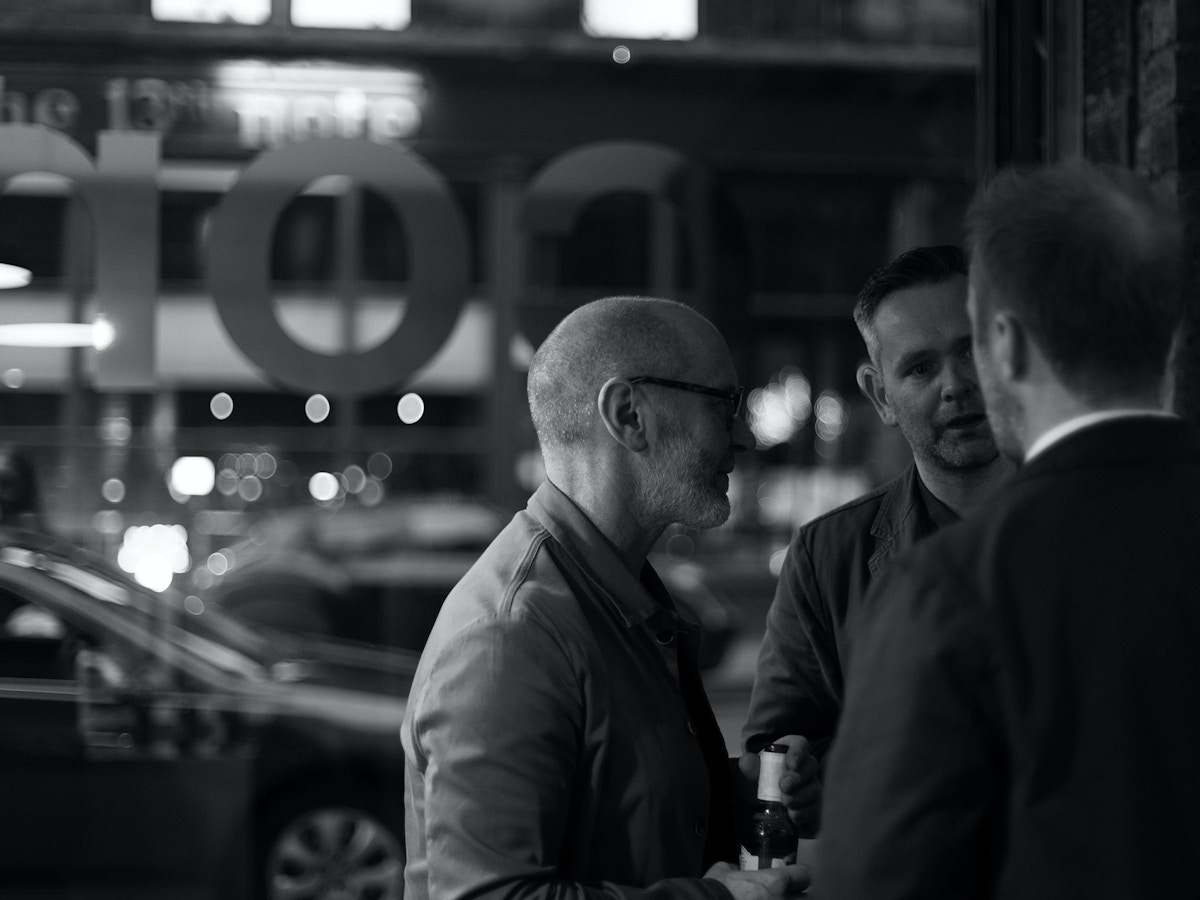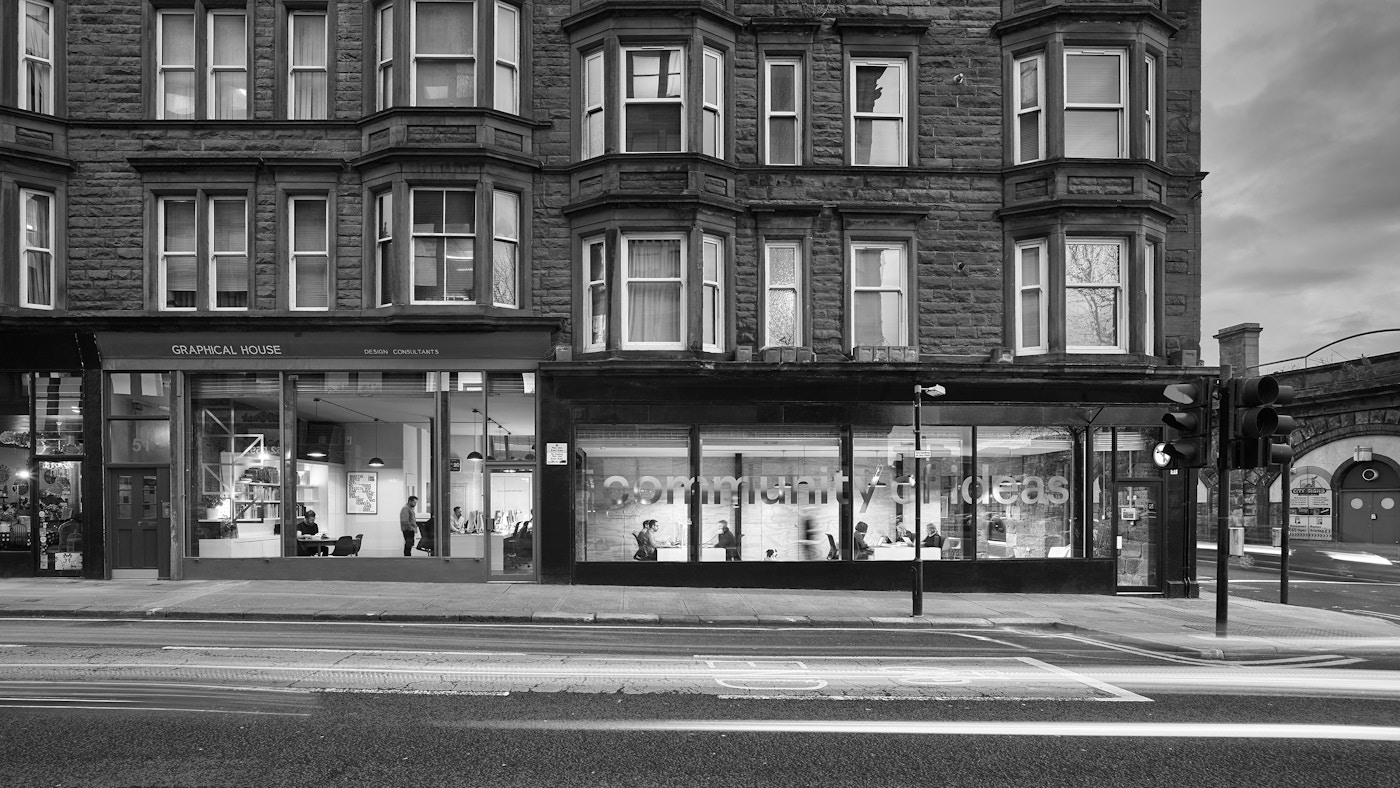Increasingly more of us are adjusting to the new normal of working from home. I write this sitting amongst various coats and bags, as my coat cupboard becomes a new form of workplace. As designers, we are privileged to have the ability to work from home (or cupboard), offering us greater flexibility than most in these odd times. But this has also made me appreciate the studio more — having a support group and freedom to collaborate — a ‘community of ideas’.
Remote-work practices are likely to continue in some form for the foreseeable future. As we plan and prepare to ease back into office life safely, I wanted to take a look at how the workplace has changed over recent years and weigh up the advantages and disadvantages of this new work environment. Going forward, how will the global health emergency impact our workplace?
After a prolonged period of sequestering at home, I am eager to get back to the studio. At Graphical House, we are lucky enough to work in a thoughtfully designed space, filled with natural light (albeit sometimes blindingly so), with enough room to spread out across two desks and move freely around the office. But does Covid 19 present the end of collaborative work space? The future is looking socially distant and we may need to make both physical and cultural changes to our modern workplace to adhere to new norms.

Office Design
From the 1960’s grid-like rows of desks you see on Mad Men, to the rise of cubicles in the 1980’s and finally to the controversial ‘hot-desking’ and open offices of the 2000’s. Will post-pandemic offices see the return of the cubicle? The typical workstation prior to the last decade was the 8 x 8 foot compartment, fitted out with acoustic panelling in a bid to maximise productivity and minimise distraction. This so-called ‘Action Office’, originated by Robert Propst in 1968 — then president of Herman Miller — was designed to give workers a dedicated space using modular storage and noise controlling materials, built for movement and flexibility. However, his intentions were compromised as employers sought to fit more workers into one room, restricting them to a much smaller and more confined space.
In 2020, office design has reached a tipping point. Our open offices of today may no longer provide us with a safe space to work. Once a hub of collaboration and engagement, these open work environments could become a hotbed of viral transmission. Close proximity, shared desks and communal areas mean employees are at a much greater risk of coming in contact with and spreading viruses. With the increased amount of partitions and sneeze guards popping up in public spaces, could the cubicle be a way to combat the spread of germs in the office? As the ongoing debate between privacy and interaction in the workplace continues, office design has come full circle, arriving back at a concept synonymous with a loss of connection and communication.
According to the Harvard Business Review, physical proximity boosts productivity. People are more likely to be engaged at work if they can move around and connect with co-workers. Rather than reverting to an isolated way of working, there are more efficient, cost effective measures we can set in place that do not inhibit interaction.

Adaptability
The adaptability of the open office may be its saving grace. Modular furniture, once used to bring people together, can also be pulled apart to adhere to current social distancing guidelines. These spaces can be adjusted to suit changing situations — for example, adding clear plastic partitions between desks can help maintain a sense of collaboration, while cutting down on the spread of germs. However, there are other, less disruptive ways to reduce viral transmission in the workplace. Flexible, open-plan spaces allow for different behaviours to develop, and are surprisingly well suited to this time of change.
“Behaviour changes can reduce the spread of viruses by as much as 80%”
World Health Organisation (WHO)
Behavioural changes are fundamental in managing the spread of the virus. In their Outbreak Communications Planning Guide, the World Health Organisation (WHO) suggests behaviour changes can reduce the spread of viruses by as much as 80%. By adapting our actions and taking preventative measures such as washing hands and avoiding physical contact, we can mitigate the spread of germs.
However, maintaining any change in behaviour is hard and relies on personal, social, and environmental factors to influence our habits and attitudes. Small visual cues, brief reminders and changes to our surroundings can prompt us to conform to these new ways of working. These indirect suggestions or ‘micronudges’ (outlined in Nudge Theory) aim to positively shape our decision making in regards to public health. Within the workplace, simple design interventions such as marking out a one way route, guidance for social distance, or simply having hand sanitisers at every touch point in the office, could be ways in which we can change the working environment to influence our behaviour.
These small changes to our habits and routines can have a significant impact over time. As our new behaviours become more instinctive, we learn to adapt to changing situations.

A Flexible Workplace
Adaptability is a necessary quality in a constantly changing work environment, and flexible, modular solutions are proving indispensable in the future of office design. Now more than ever, we should allow ourselves to flex towards this uncertainty, and embrace the new reality.
This theme of flexibility extends further than just the physical environment. With a digital infrastructure for remote work already set in place, could we see a continuation of this ‘flexi-future’? Having fewer people in one space is another basic step we can take to lower risk of infection. Rather than companies spending money on safeguarding their office space, many employees could simply continue to work from home.
Advances in technology have transformed the way we work — we are no longer tied to the office. At Graphical House, tools such as Dropbox, Zoom, Notion and Slack have made it possible for us to work anywhere and everywhere, not just with co-workers, but with clients on the other side of the world. These platforms are essential to allow for greater flexible working.
However, one thing I have noticed with video conferencing platforms such as Zoom, is that although they enable us to communicate with our team, the spontaneous, informal exchanges that are so vital to the refinement of ideas have been replaced by formally planned and scheduled interactions.
Without a physical work environment we may suffer from the loss of camaraderie amongst co-workers. That sense of community that brings Graphical House together, encouraging collaboration — not just with our colleagues, but with the wider creative community — could take a hit. Proximity is essential for sharing ideas — creativity thrives in a collaborative studio environment. These new modes of communication could stunt innovation facilitated by face-to-face interaction, unable to simulate the dynamism and energy of the communal workplace.

Agile Working
Working from home has given me control of my environment and where and when I choose to work. It may not be ideal to be confined to the coat cupboard, but this private space with little to no distractions (unless you count the admiration of my bag collection) provides me with a focussed place to work. If I want to read, I migrate to the sofa. For video calls, I get the best light in the chair by the window. For lunch, I reconvene with my partner in the kitchen.
As anticipated, it is the social aspects of these affordances that I am missing. The physical space can be adapted to adequately suit my needs, but my ‘proximity’ to people and the ease of workplace collaboration has been removed.
“Working from home has given us a new appreciation for the immediacy; and the efficacy of human-to-human interaction.”
Gerard Taylor, Creative Director of Orangebox
I spoke with Gerard Taylor, Creative Director of Orangebox — a UK-based designer and manufacturer of furniture for the changing workplace. He feels that “working from home has given us a new appreciation for the immediacy; and the efficacy of human-to-human interaction.” We’re so used to the convenience of having our colleagues nearby — if a question arises during a meeting, it’s quick and easy to pop out and check things with the team; rather than creating an endless thread on Slack.
However, he reflects that “Covid-19 has fast-tracked workforces into working from home, which, for many of us, has proved more productive and less complicated than we could possibly have imagined.” As a result, organisations now understand that enabling workers to be based at home part of the time benefits both the workforce (through an improved work-life balance) and the environment (reducing the number of commutes), while offering significant cost savings to employer and employee alike.
For me, what this highlights is the need for a dynamic workplace. Spaces that allow for solitude are just as critical for innovation and creativity as those that foster collaboration. Having dedicated spaces for different types of work has really boosted my productivity and engagement.
Gallup’s recent report, State of the Global Workplace, found that only 15% of employees worldwide are engaged at work. Those who spend up to 20% of their time working remotely were the most engaged of all workers surveyed. This suggests that the most engaged workers are able to balance their time between both a collaborative and interactive workplace, and working remotely to achieve the privacy and focus needed for individual work. The office alone simply isn’t meeting our needs.

The beginning of new workplace diversity
The current pandemic offers up an opportunity to rethink how we work. Splitting our time between focussed remote work and repurposing our office space for activities better done in person; building relationships, learning, and socialising through serendipitous interaction whilst providing a sense of community — could be a logical way forward. Taking back control of when and where we work helps us to appreciate that different modes of work require different settings and typologies.
Flexibility seems to be the overarching theme — with engagement as the measure of success — that we need to embrace and put into practice over the coming months. I expect that Coronavirus will transform both the culture and the design of the contemporary workplace as we know it, and we will need to flex and adapt with it to ensure we stay ahead of — and flatten — the curve.
